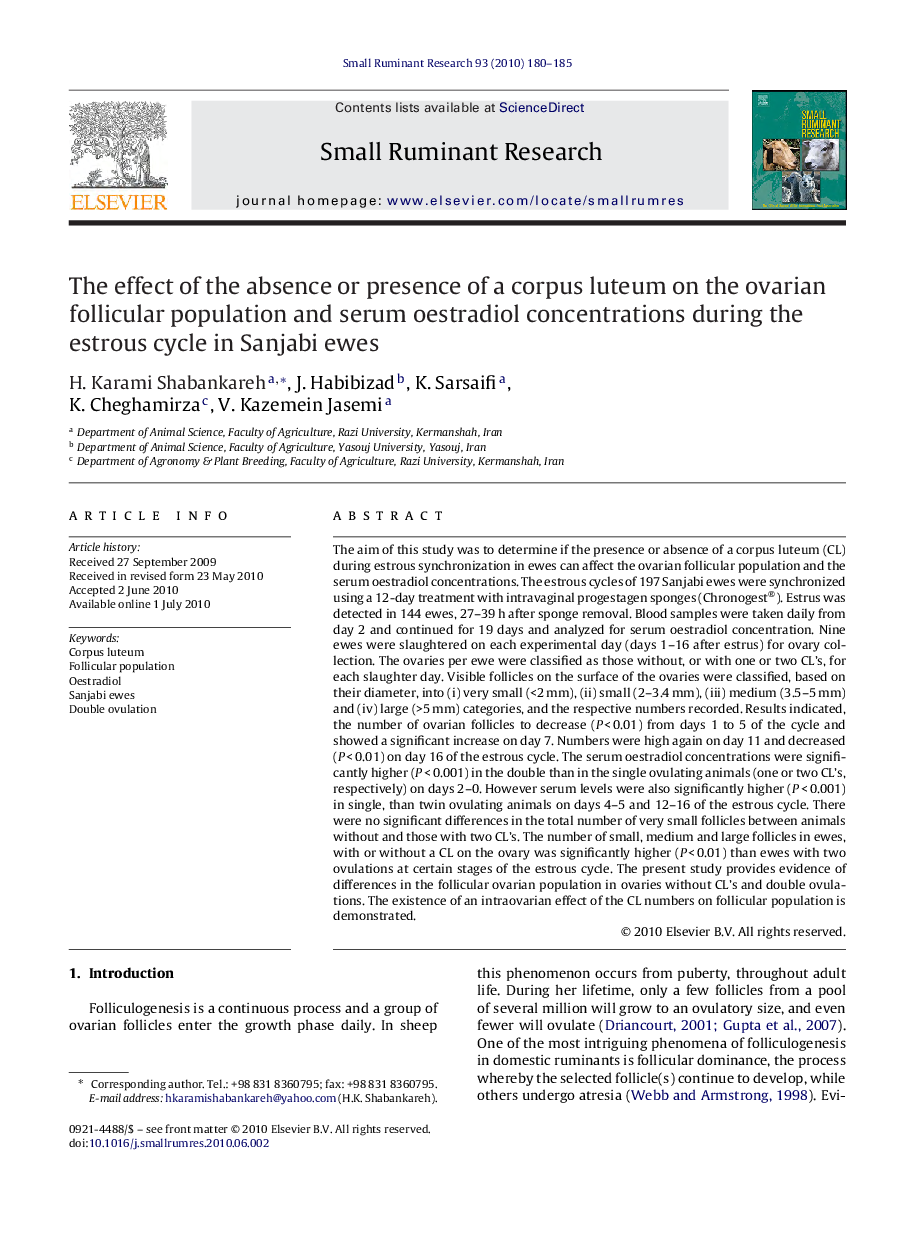| Article ID | Journal | Published Year | Pages | File Type |
|---|---|---|---|---|
| 2457303 | Small Ruminant Research | 2010 | 6 Pages |
Abstract
The aim of this study was to determine if the presence or absence of a corpus luteum (CL) during estrous synchronization in ewes can affect the ovarian follicular population and the serum oestradiol concentrations. The estrous cycles of 197 Sanjabi ewes were synchronized using a 12-day treatment with intravaginal progestagen sponges (Chronogest®). Estrus was detected in 144 ewes, 27-39Â h after sponge removal. Blood samples were taken daily from day 2 and continued for 19 days and analyzed for serum oestradiol concentration. Nine ewes were slaughtered on each experimental day (days 1-16 after estrus) for ovary collection. The ovaries per ewe were classified as those without, or with one or two CL's, for each slaughter day. Visible follicles on the surface of the ovaries were classified, based on their diameter, into (i) very small (<2Â mm), (ii) small (2-3.4Â mm), (iii) medium (3.5-5Â mm) and (iv) large (>5Â mm) categories, and the respective numbers recorded. Results indicated, the number of ovarian follicles to decrease (PÂ <Â 0.01) from days 1 to 5 of the cycle and showed a significant increase on day 7. Numbers were high again on day 11 and decreased (PÂ <Â 0.01) on day 16 of the estrous cycle. The serum oestradiol concentrations were significantly higher (PÂ <Â 0.001) in the double than in the single ovulating animals (one or two CL's, respectively) on days 2-0. However serum levels were also significantly higher (PÂ <Â 0.001) in single, than twin ovulating animals on days 4-5 and 12-16 of the estrous cycle. There were no significant differences in the total number of very small follicles between animals without and those with two CL's. The number of small, medium and large follicles in ewes, with or without a CL on the ovary was significantly higher (PÂ <Â 0.01) than ewes with two ovulations at certain stages of the estrous cycle. The present study provides evidence of differences in the follicular ovarian population in ovaries without CL's and double ovulations. The existence of an intraovarian effect of the CL numbers on follicular population is demonstrated.
Related Topics
Life Sciences
Agricultural and Biological Sciences
Animal Science and Zoology
Authors
H. Karami Shabankareh, J. Habibizad, K. Sarsaifi, K. Cheghamirza, V. Kazemein Jasemi,
